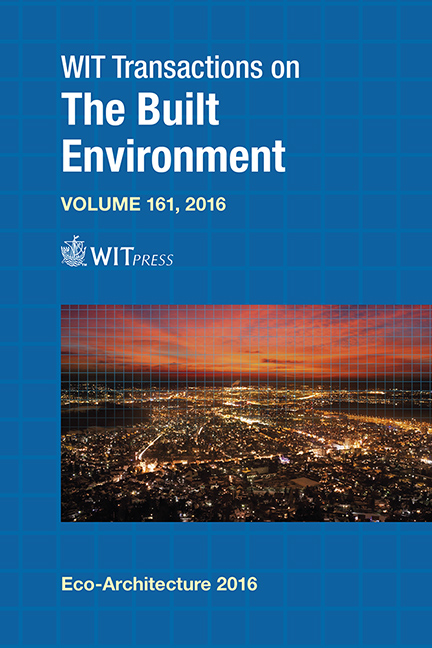The Significance Of Early Stages In Participatory Design For Social Sustainability
Price
Free (open access)
Transaction
Volume
161
Pages
11
Page Range
237 - 247
Published
2016
Paper DOI
10.2495/ARC160211
Copyright
WIT Press
Author(s)
Ł. Rosiak
Abstract
The source literature devoted to participatory design concentrates very often on studying preferences in feeling architecture, as the culmination and a really key case is the post-occupancy evaluation (POE). The participation of respondents, users in managing the architectural environment is established especially in the field of these elements, where creation takes place with the use of an easy means of communication – a drawing, graphics and also those, which are oriented towards picking out the subjective component of assessment, for which the objectification process is not so important. Such study recognizes individual preferences and it enables one to draw conclusions, relatively non-distant from social expectations, using statistics rules. In such constructed action, the effectiveness of participation is strongly conditioned on the range of ability to involve a big group of potential recipients of architectural design.
In investigations carried out for over 50 years of functioning of the social participation as the system of supporting the effectiveness of architectural design, oriented towards supporting local communities, the other proposals also appear, widening the range of possible participation. However, most of these actions take place far away outside the borders of Poland and therefore the mechanisms used in them are difficult to inculcate in the local area.
In the paper the significance of early stages of the Method Architektura dla Lokalnej Społeczności (AdLS) – Architecture for the Local Society is presented, which makes an attempt at improving social participation through constructing mechanisms of objectifying opinions of architecture recipients, involving them in constructing the language of dialogue, the system of multi-criteria assessment, selection of criteria and more conscious working within the confines of designing as well as building long-term social relations with simultaneously retaining rulesof adequate spatial environment management. The above-mentioned factors are directly connected with the rules of balanced development.
The author used the process of active communication, where numerous symptoms were found in the early stages of programming that is in a multi-media presentation, poll or participatory meeting. It seems that these small steps might be replies to responsive needs of local communities. In the present stage they can improve the process of socially accepted construction of elements, determining directions of design searching with retaining the rules of balanced social development.
Keywords
participatory design, architectural design process, design methods





